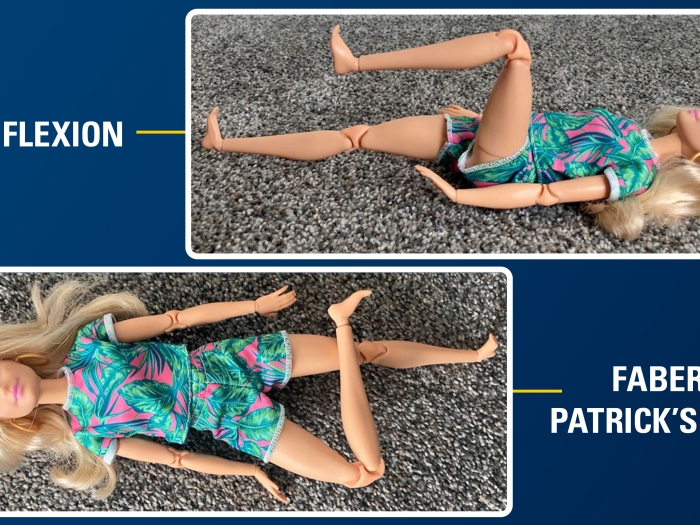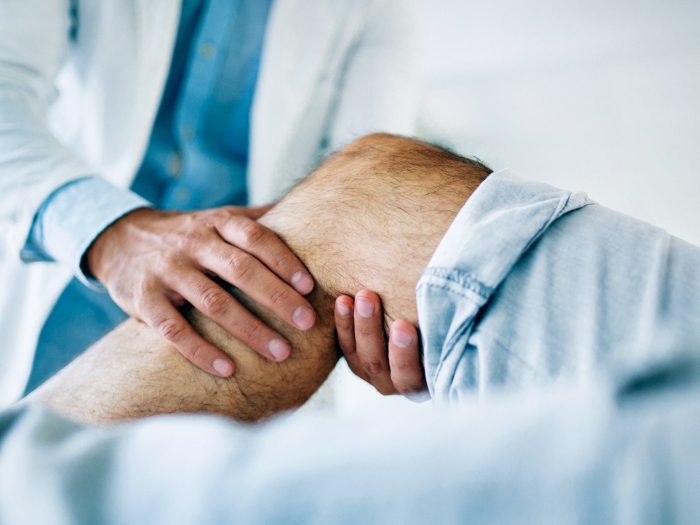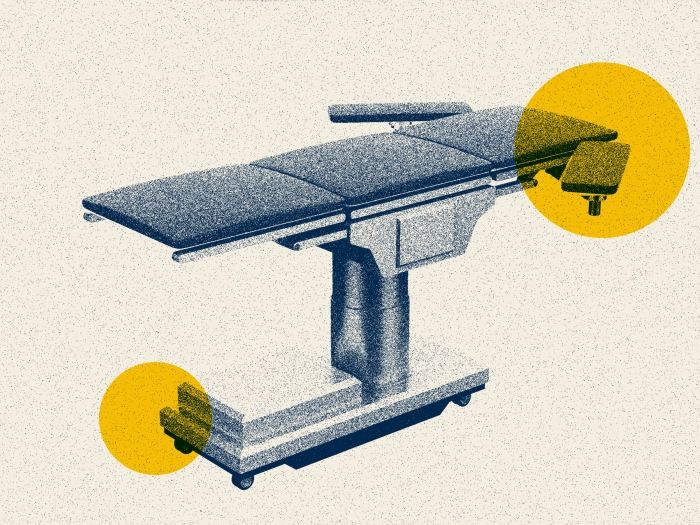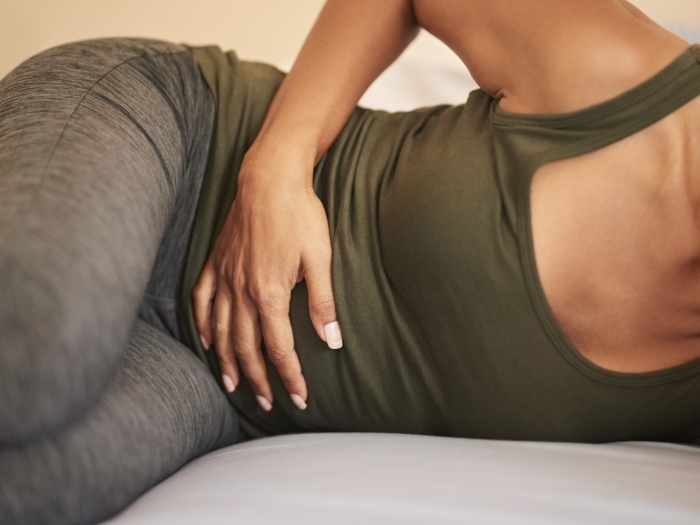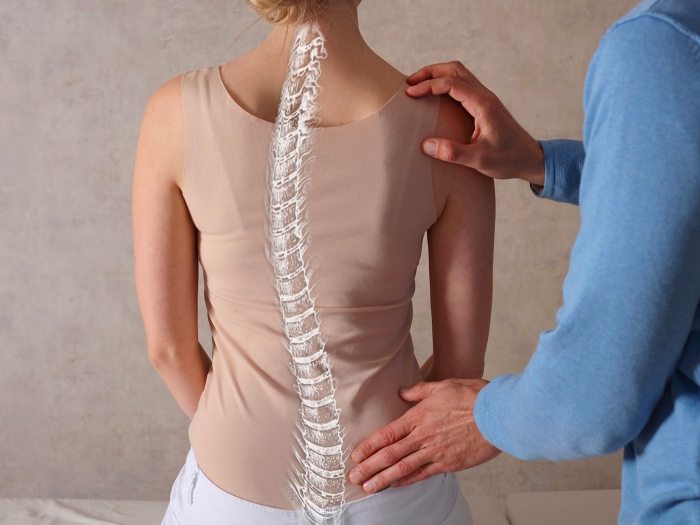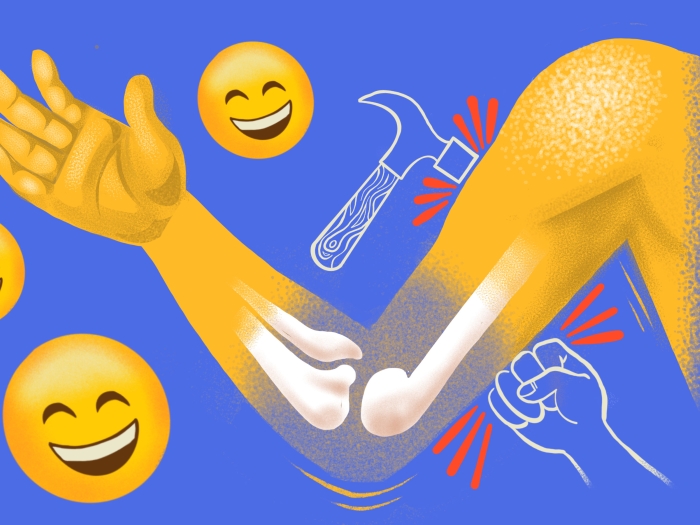After a serious knee injury, orthopaedic surgery and physical therapy helped one high school gymnast get back to sports — and consider a future career in the field.
2:00 PM
Author |

Front handspring. Front full.
Pain.
Before 17-year-old Maddie Vernon realized it, her seemingly normal gymnastics practice changed instantly.
"All of a sudden, my knee gave out during a tumbling pass," Vernon says.
The tumbling pass when Vernon experienced her injury.
X-rays would reveal Vernon had experienced a complete anterior cruciate ligament (ACL) tear, as well as medial and lateral meniscus tears.
The ACL is a ligament in the knee that helps stabilize the knee joint. The meniscus is cartilage in the knee that acts as a cushion between the thigh and shin bones, with the medial meniscus on the inner-side of the knee and the lateral meniscus on the outer-facing side of the knee.
Vernon underwent a three-hour outpatient surgery with Eileen Crawford, M.D., an assistant professor of orthopaedic surgery and sports medicine at C.S. Mott Children's Hospital, that included repairing both sides of her meniscus and taking a graft from her hamstring tendon to rebuild the ACL.
"The day after surgery I had to start physical therapy to get me moving and using my knee," Vernon says.
Back to sports
Vernon started physical therapy sessions at the Michigan Medicine Comprehensive Musculoskeletal Center at its Brighton Center for Specialty Care location.
"Maddie started coming to physical therapy twice a week at first to get her leg moving, work on her range of motion and proprioceptive, or balance, training," says Daryl Montie, DPT, CSCS, a physical therapist and clinical site supervisor at the Brighton location of the Comprehensive Musculoskeletal Center.
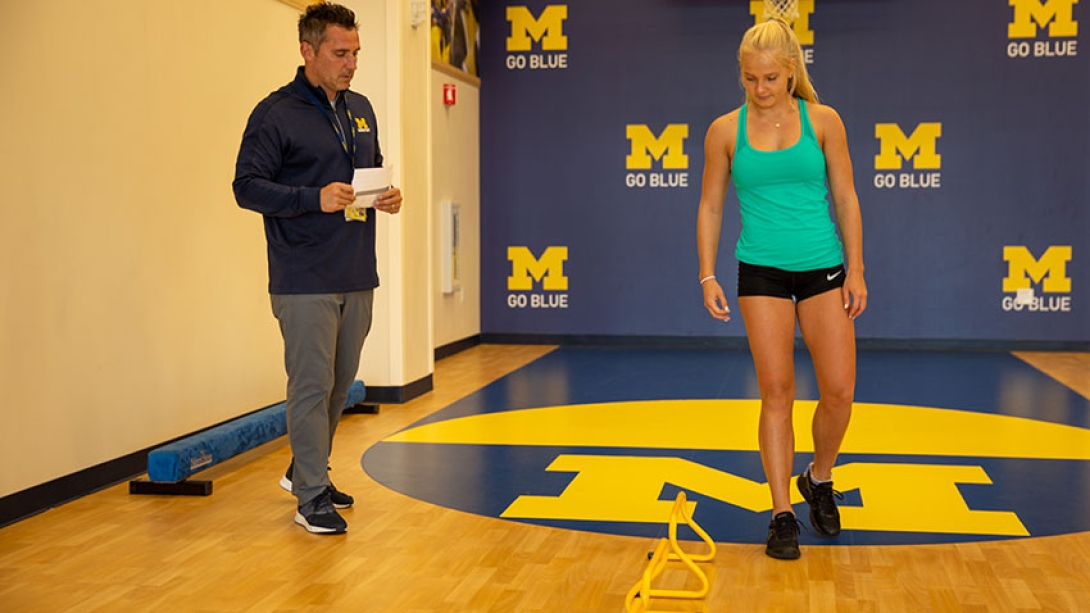
"We progressed our focus to strengthening, neuromuscular control and stabilizing until about six months after surgery," he says. "After that we progressed to agility and impact activities."
Eight months after the injury, Vernon was cleared to return to sports.
But she realized her knee still wasn't the same as it had been before her injury.
"I decided to quit gymnastics," Vernon says. "I knew I didn't want to compete in college and I didn't want to risk injuring my knee like that again. And I really wanted to focus on track and field."
The decision wasn't easy.
"Gymnastics was my life," Vernon says. "I did it for almost 14 years before my injury. But I just felt like my injury would constantly be in the back of my head and prevent me from doing my best."
Vernon's sessions with Montie prepared her to start training for track and field. Using an anti-gravity treadmill, she was able to get used to running again.
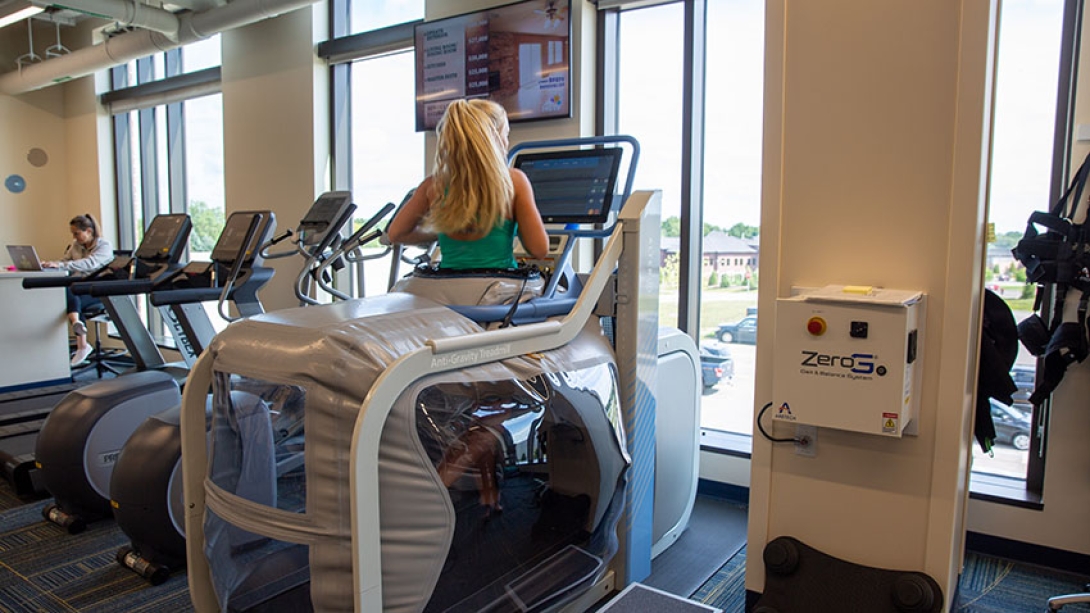
"It's as if you are running weightless, or running in water," Montie explains. "You still have some weight on your feet, but it's kind of like floating while running. It's not painful for patients and helps them get used to the motions and mechanics of walking or running again."
Still, Vernon has to take some extra precautions before and after exercise.
"I keep an eye on my leg while running and do some after care on my knee after a workout, such as icing it, and stretching out my hip flexors that get tight from when I used to favor my mobile leg over the injured one" Vernon says.
But she doesn't see those tasks as time consuming compared to her mobility right after her injury.
"My knee is so much better than just a month ago and keeps improving," Vernon says. "Daryl would work with me, even on days where something felt off in my knee, and help me stretch and work through the pain."
Montie agrees, "Maddie was great about communicating what she was experiencing and it allowed us to modify her treatment program to meet her evolving goals. She was determined to come through this whole process stronger than ever and she worked really hard to make that happen."
He adds, "I'm proud of her and look forward to seeing what her future brings."
Comprehensive care
Vernon says her injury wasn't just a challenge physically.
"It really made me realize how much I had taken for granted simple things such as showering or getting dressed in the morning," Vernon says.
Vernon's mother, Elizabeth, agrees, "The emotional stress and grieving process of leaving gymnastics, combined with the physical pain and length of recovery, was difficult for her."
Elizabeth notes that the care Vernon received was comprehensive.
"The Michigan Medicine team was 100% supportive in all aspects of her recovery," Elizabeth says. "It wasn't just her physical recovery, but her as an entire person. My husband and I are grateful for the way they took care of her from top to bottom, inside and out."
Montie adds that the Comprehensive Musculoskeletal Center was created for patients like Vernon.

"Maddie is a great example of the comprehensive care the center can provide patients," he says. "From physician appointments, to imaging, to surgery, to physical therapy, to returning back to sports, patients can have all of their musculoskeletal care here."
LISTEN UP: Add the new Michigan Medicine News Break to your Alexa-enabled device, or subscribe to our daily updates on iTunes, Google Play and Stitcher.
Future career
After experiencing her injury, Vernon has a new outlook on the future.
The high school senior was always interested in a future career in medicine, but her area of focus has changed.
"She was interested in pediatrics because she loves children, but once this injury happened she became very interested in sports medicine and orthopaedics," Elizabeth says. "She's been an athlete her whole life and she became so interested in the mechanics and recovery of it all."
Vernon adds, "I actually shadowed Dr. Crawford and learned a bit more about sports medicine."
Crawford was happy to give Vernon a glimpse into the field.
"Encouraging intelligent young women, like Maddie, into our field is a mission of mine," Crawford says. "It's a special treat for the Brighton team and me to see Maddie considering a career doing the same type of work we did to help her in her recovery."
For now, Vernon plans to keep exercising, hanging with friends and sharing in her family's love for travel. She's training for the winter season of track and field where she'll compete in six plus events per meet.
And she's already thinking about her future patients.
"I think this experience has really given me the ability to relate to patients," Vernon says. "I know what it's like to have a serious injury and recover from it."

Explore a variety of healthcare news & stories by visiting the Health Lab home page for more articles.

Department of Communication at Michigan Medicine
Want top health & research news weekly? Sign up for Health Lab’s newsletters today!
